The Al-Qarah Mountain Range or Jebel Al-Qarah is in the Al-Ahsa Province of Saudi Arabia. Al-Ahsa province is marked as a UNESCO World Heritage Site. Al-Ahsa Oasis is composed of twelve components and has more than 2.5 million palm trees
They represent traces of continued human settlement in the Gulf region from the Neolithic to the present, as can be seen from remaining historic fortresses, mosques, wells, canals and other water management systems. With its 2.5 million date palms, it is the largest oasis in the world. Al-Ahsa is also a unique geo-cultural landscape and an exceptional example of human interaction with the environment.
Source: https://whc.unesco.org/en/list/1563
Fascinated by how the rocks were shaped.
The first thing that fascinated me about the Al-Qarah mountains was how different they looked from the solid and rugged mountains I had seen before. Al Qarah Mountains looked almost as if they had been made from clay or play-do. The sides of the mountains looked as if they were shaped and filed to give an even look while its top looked as if they have been shaped round and flat by somebody’s hand.
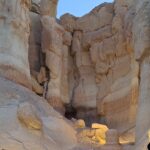
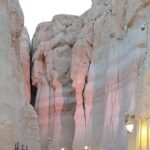
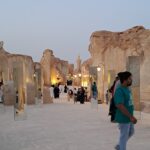
This difference in the outlook of the Al-Qarah mountains, as I later found out, was because these mountains were composed of sedimentary rocks. Sedimentary rocks are one of the three types of rocks (the others being igneous and metamorphic rocks) that are found on our planet and are formed by the gradual accumulation and compression of sediments over an extended period. These sediments encompass a range of materials including sand, silt, clay, and organic matter, which settle and solidify under the weight of geological forces. Unlike the hard and resistant rocks typically found in mountainous regions, sedimentary rocks have a certain malleability due to their composition and formation process. Blowing winds and flowing water have the ability to sculpt and refine the surface of these rocks, resulting in their distinct and shaped appearance.
The Caves
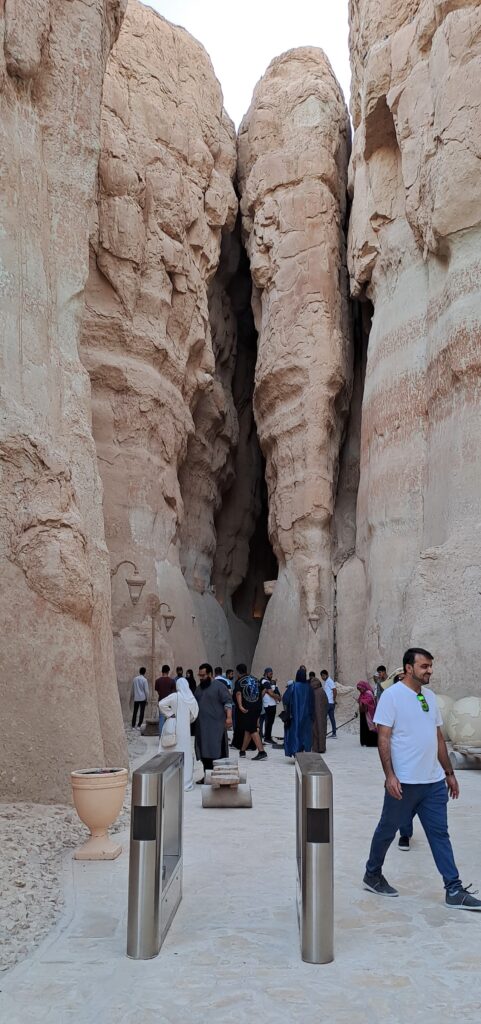
The caves are the major tourist attraction of the Al-Qarah mountain range. The lead-up to the cave is majestic. Slowly we walked up a well-lit path, made tourist-friendly by placing benches, lights, and spots for taking pictures. Normally entrance to caves is small and one has to crawl or at least bend to get in, but that was not the case here. We could easily walk inside as if we were passing the grand entrance of a royal palace.
As we entered the caves, we noticed that the temperature inside was way cooler than what we were experiencing outside. Later, I read a bit about it and found that caves have their own climates due to insulation from sunlight, existent or non-existent passage for airflow, and geothermal heating. It is a fascinating thing to read and research about. So do read up on it!
The walkway inside the caves is well lit up and there are many opportunities for taking stunning pictures. We even found a photographer who had set up his camera and flashlights, for people wanting a more professional photo.
There were many passages inside, some lit up artificially, some by sunlight making way from the roof of the caves, while some were dark, and we had to rely on torch lights from our mobile phones. All the passageways were dry, but I think that during rainy seasons, there might be some sort of water falling from the top. It took us around 30 minutes to explore all the passageways. All of us, more importantly the kids, were super awed from what they saw especially when they saw that some of the rocks seemed to be hanging from the roof.
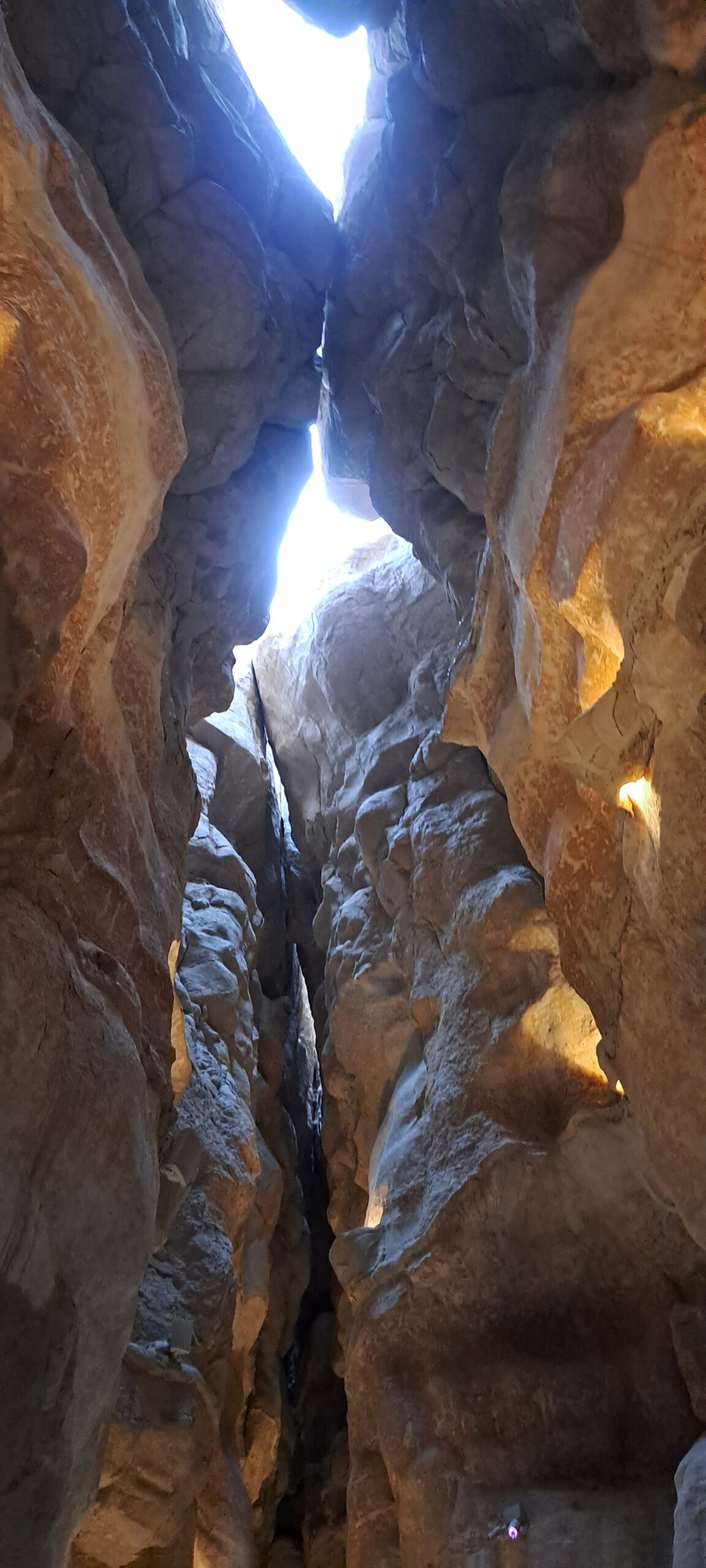
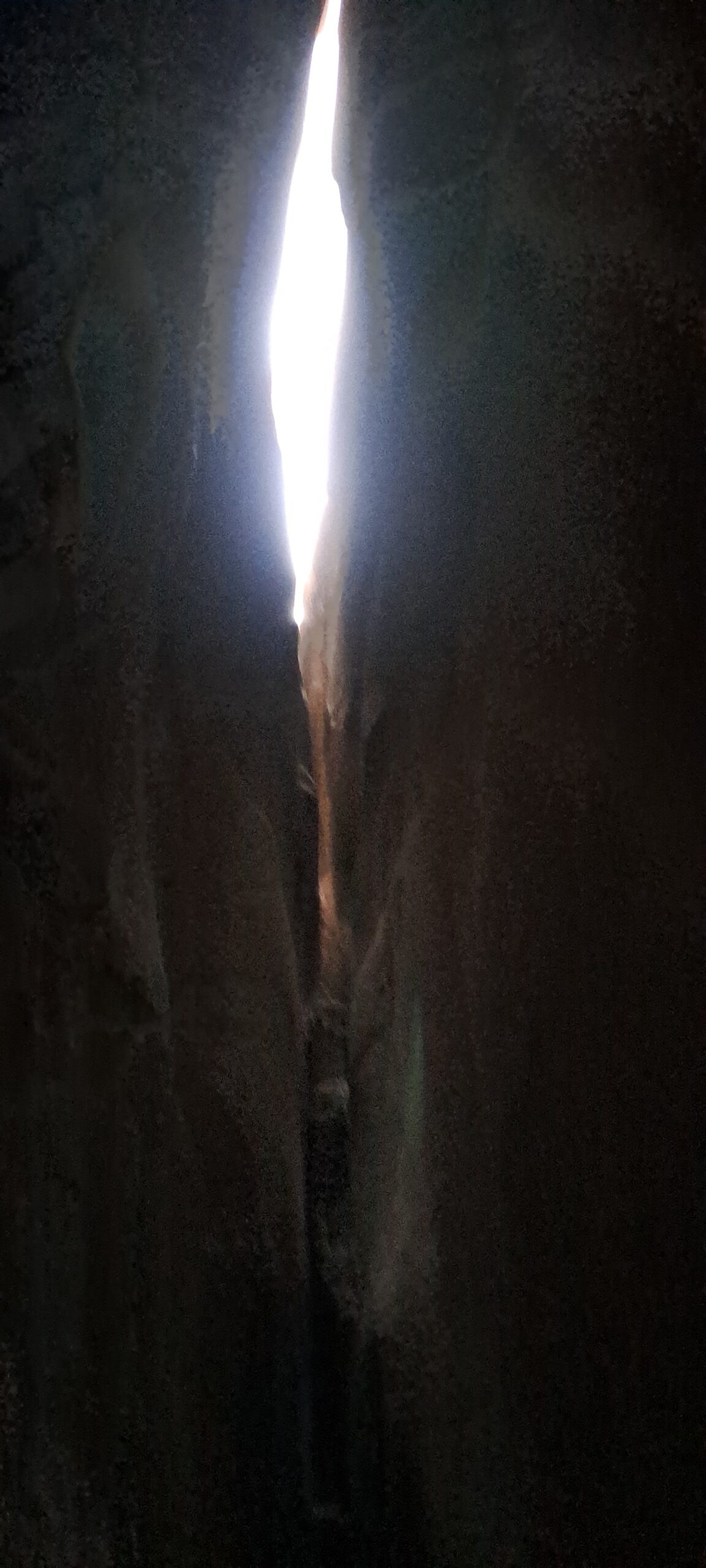
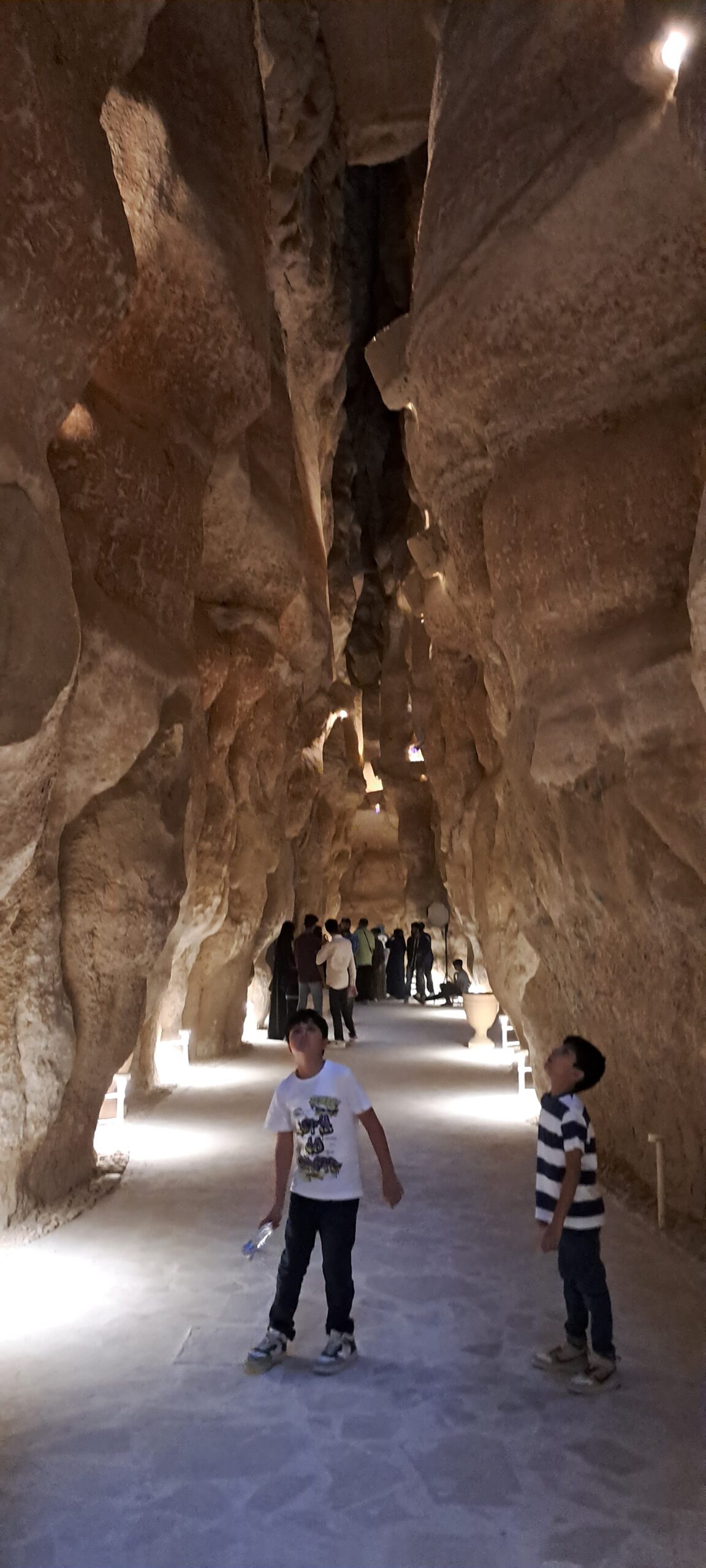
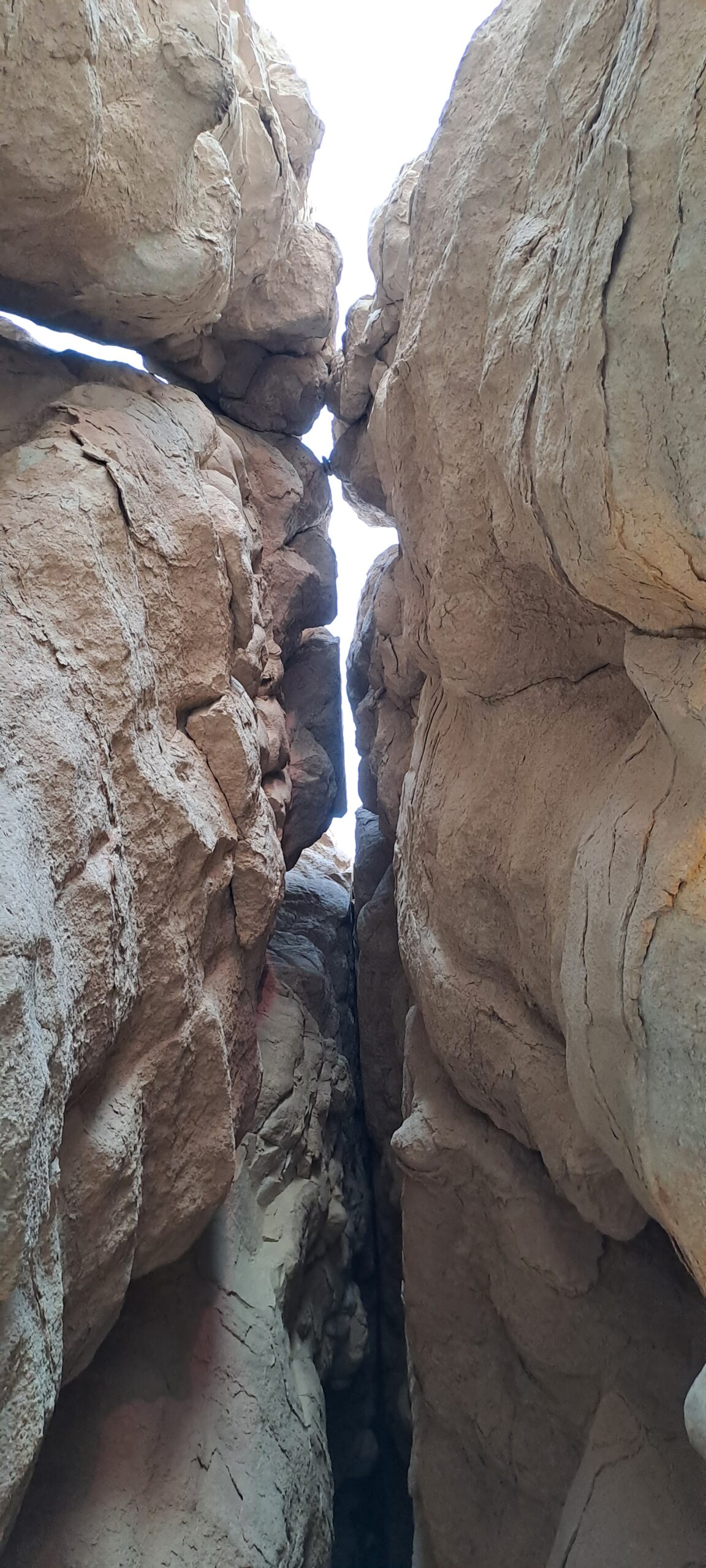
There were no recognizable patterns or organization of these passages inside the caves. Some of them were wide enough for 2-3 persons to pass through them at a time and some were so small, that only a kid can pass through. Passing through them and thinking about what I was seeing, I wondered how they were formed in the first place. These caves even had no pattern or symmetry like some of the caves shaped by human civilizations like Petra. Was it because these mountains were submerged under the sea once, and water used to flow through these caves, shaping them? Did the water recede underground or due to tectonic shifts the mountains appeared above the surface? Considering that Al-Ahsa is an Oasis this was the likeliest of all possibilities.
Whatever the answer to how they were formed, one cannot help but be amazed at the many different expressions of our Creator. When I design or create something I fret about ordering and arranging things into a symmetry, but here I saw that our Creator has created these mountains and many similar structures worldwide, without following any geometrical shape, design, or symmetry. And yet they look so majestic and spell bounding! One can only wonder at the powers of Allah, who makes all of this happen by just saying, Kun.
About the site
A UNESCO World Heritage Site: Al Qarra mountains and the Al-Ahsa province in general is a UNESCO world heritage site and one must include it in their bucket list to explore and see for themselves why it has been nominated as such. More information can be read from the UNESCO website.
Tickets and Services: Tickets were 50 SAR for Adults and for children under 13 the entrance was free. The location also has a small museum, a masjid, clean washrooms, small shops for souvenirs and groceries, and a restaurant. The exploration time takes around 30-40 minutes and even more, if you want to climb up the mountains and look at the view, which is definitely recommended, especially to witness the sunset.
Presence on Instagram: @landofcivi is their Instagram handle. I messaged them about their timings and received a reply on the same day, which was really cool of them.

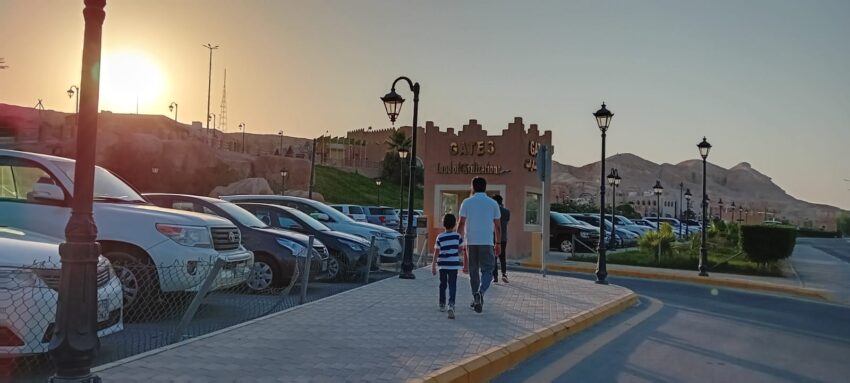

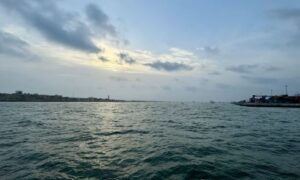
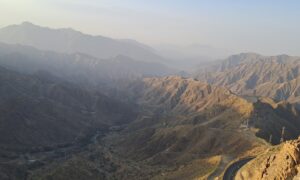

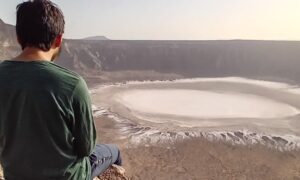
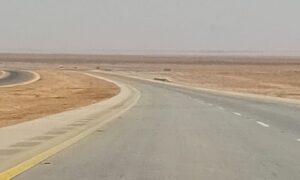


Was definitely a mesmerising experience..your blog is MashaAllah well written and detailed. It captures the true feelings of a tourist who has visited these caves before.